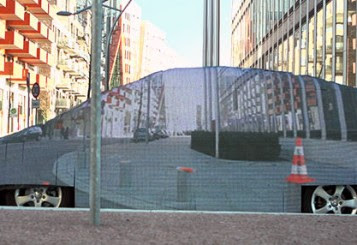
Are There Accident-Prone Car Colors?
Most car buyers don't relate choosing car colors with safety when buying a car. Your car's color is most often dictated by personal preference or sometimes by availability. It's rare to encounter someone who says to you that the color was chosen because it was safer.
There has been a lot of anecdotal evidence that certain car colors are more accident prone than others. The myth that red cars are more crash-prone probably came from the fact that sports cars are usually red and fast, aggressive drivers and sports cars statistically are involved in more accidents. The question is, does the scientific evidence back it up?
Some large companies have done color studies which show that some colors are beneficial and some do distract. For example, users of the Windows operating system will see that the default icons are predominantly blue. Blue is a color that has been proven to actually help calm people. Mercedes reportedly conducted a study several years ago on the subject of color visibility. The most highly visible color is Industrial Yellow while dark red or maroon is the least visible and can actually appear invisible in your peripheral vision at certain times of the day. Due to the way the receptors in the eye work, that color becomes virtually invisible in dim light such as dusk and early morning.
A couple of publicized studies in 2002 and 2003 found that white, yellow and silver cars seemed to be involved in less accidents compared to other, darker-colored cars. But Australia's Monash University Accident Research Center found these studies inconclusive and set about conducting one of the most comprehensive studies on the relationship of car colors and crash risk. Vehicle exterior finishes were categorized into several broad colors and variables such as lighting factors, vehicle type and crash severity were taken into account. Commercial vehicles were also excluded as they could skew the results.
The Monash University study concluded that black, blue, grey, green, red and silver were associated with higher risk during daylight hours, sometimes by as much as 10%. Night time evened out the risk factors because colors are practically indistinguishable in the dark. Interestingly, the study found that white was not statistically safer compared to other light colors. Note that the data for this study was culled from car crashes in Australia. But car colors' influence in accidents pale in significance to driving behavior that is decidedly risk inducing.
Using a mobile phone and driving while fatigued or drunk are risk factors that are significantly more dangerous than having a higher risk vehicle color. Driving faster than the posted limit is also a high risk behavior that a low risk vehicle color cannot mitigate. The advent of DRLs (daytime running lights) may be irritating for some but this helps visibility a lot and this innovation helps cut back the risk of driving a dark-colored car. It's safe to say that you should choose the color that makes you happy and just practice safe and defensive driving habits.
No comments:
Post a Comment